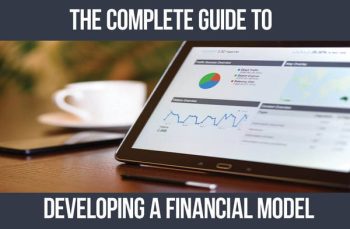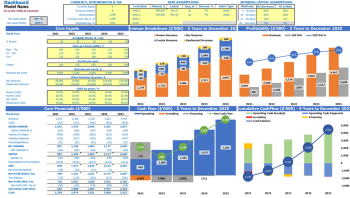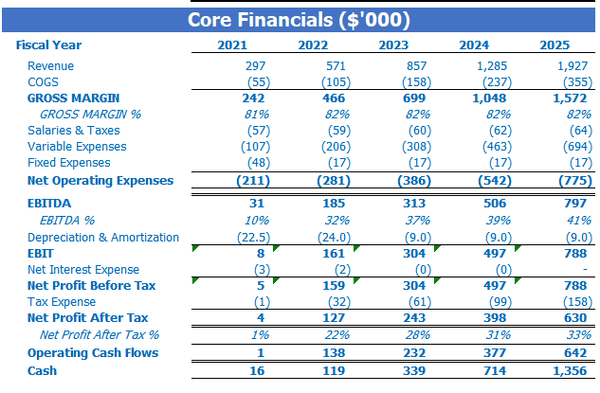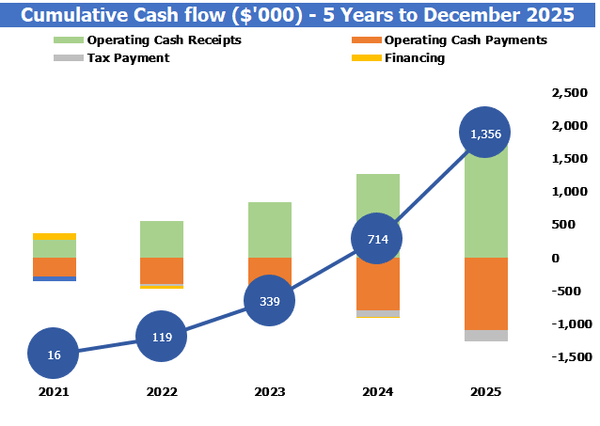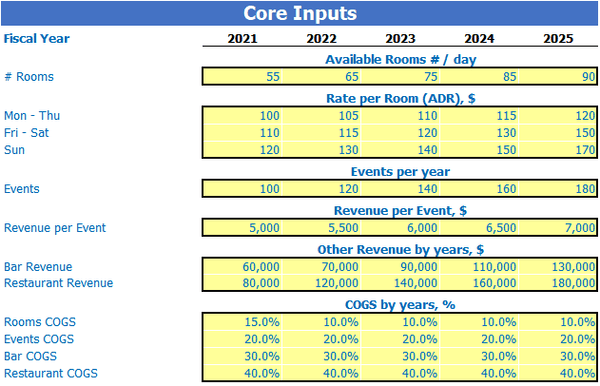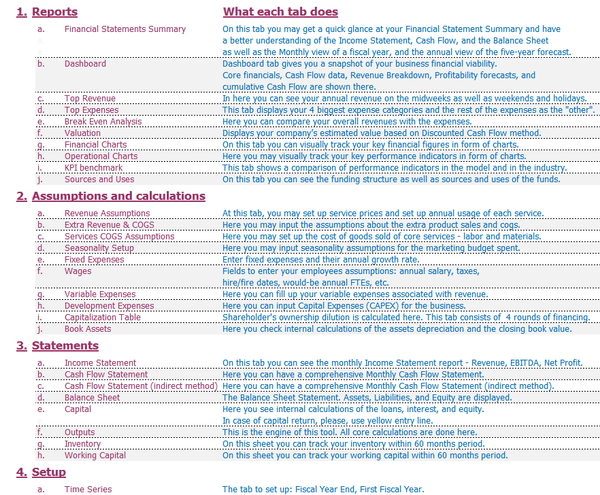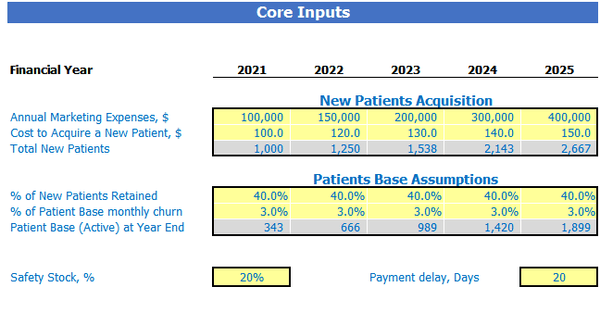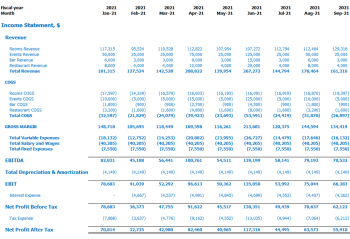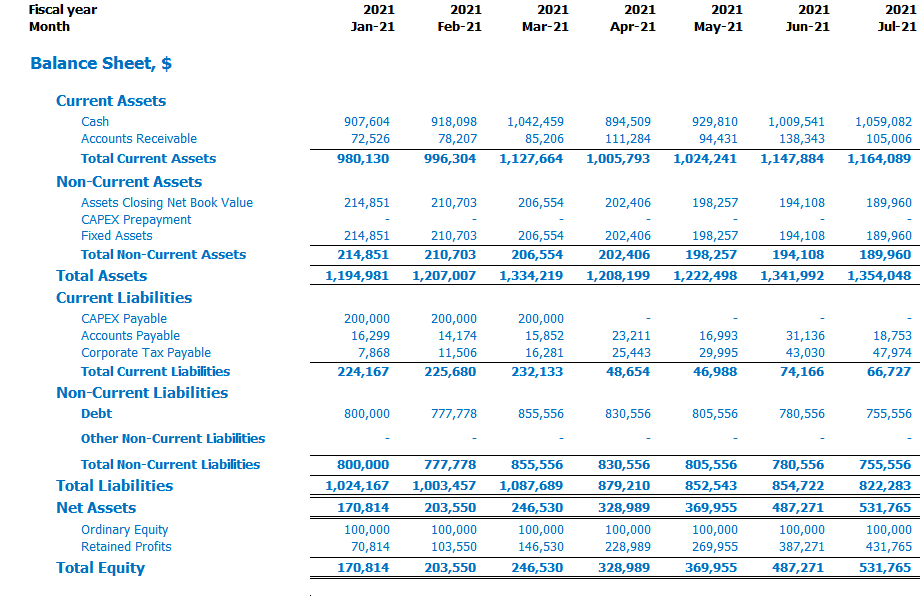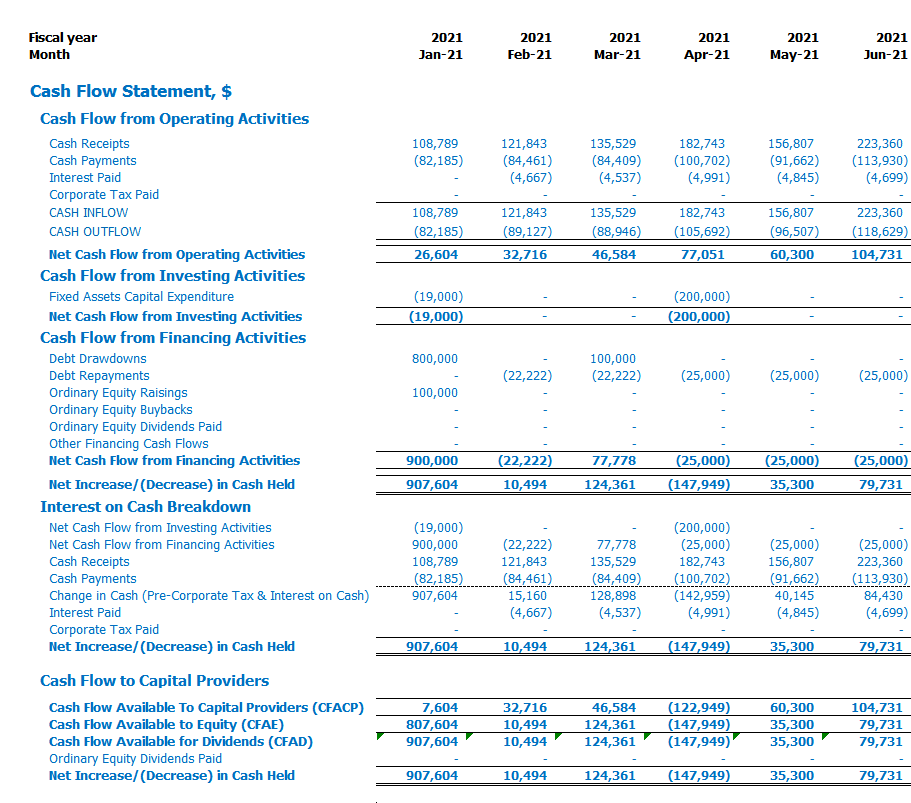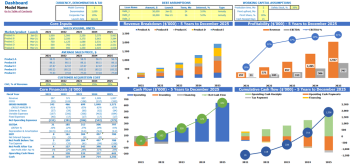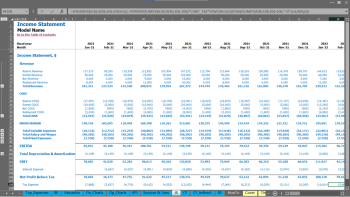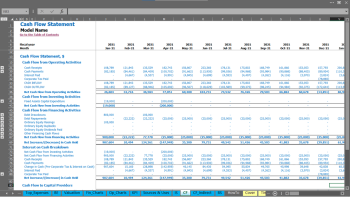- Analyzing a Business’s Compliance With Environmental Regulations During Due Diligence
- What to Look for When Performing Due Diligence on a Corporation
- What to Look for When Performing Due Diligence on a Corporation
- Analyzing a Business’s Compliance With Environmental Regulations During Due Diligence
- Analyzing a Business’s Compliance With Environmental Regulations During Due Diligence
A financial model is a digital presentation of how any business or company operates. Businesses use a well-designed financial model for decision making, forecasting business financial performance, and setting the proper direction for a growing business.
A personalized financial model is like an engine that runs on fuel. We provide our financial model with tight assumptions such as salaries, cost of goods, expenses, and a customer acquisition cost that runs like fuel. As a result, we get the output such as planned income statement, balance sheet and cash statements.
Research-based assumptions are key for any financial model to provide accurate projections. And using these assumptions, companies use financial analysis and modeling as a powerful decision-making and forecasting tool.
This article will provide a comprehensive guide on building Financial Models and some tips for success, as many beginners find it difficult to develop a Financial Model in Excel due to its complexity. But before we jump into some tips and resources on developing financial models for investors and a startup idea, it’s important to understand the basics.
Types of financial models
A tool that helps analyze and improve the dynamics of a company’s finances is a financial model . Its main purpose is to predict financial results in the future. A company hires different professionals to create such financial analysis models and update them.
Here are the main types of financial models companies use:
- Three-stage model
- Discounted Cash Flow Model
- Merge model
- Consolidation model
- Budget model
- Forecast model
- Options pricing model
And when it comes to choosing the type of model, it only depends on the needs of the business and the interpretation of business financing. It is simply because the main objective is to analyze the finances of the company correctly. For better understanding, below is the main screen of a well-designed financial model.
What makes a good financial model?
Although your company’s financial model model, you should care about some parameters. These settings help you build a nice, smooth, and easy-to-use financial model.
Some of these settings are listed below:
- Realistic assumptions
- Flexibility
- Easy to use and understand
- Charts and graphs
Which software to use to create a financial model?
You can use any software or programming language such as VBA to build a financial model to ensure quality and standard at the highest level. However, Excel is by far the most common and trusted platform for creating financial models. Apart from its affordability, it has many other qualities listed below that make it the number one choice for most financial model builders for their startups.
- Completely flexible and dynamic.
- Frequently used by ordinary people.
- Extremely affordable.
- Requires no training to use even for beginners.
- Transparent and easy to audit.
- Easily editable.
- Customizable according to your needs.
- Easily integrate with other finance software.
Best practices for building a financial model
When dealing with finances, simply relying on personal thought or instinct seems like the wrong choice. Instead, the best thing is to test situations, interpret financial results, and make better choices based on financial model best practices . Consequently, the financial modeling industry is moving towards near perfection in creating reliable and profitable models. Investing in financial modeling is one of the high priorities over the next two years (26%), according to information from Statista.
Below are some strategies for building a perfect financial model.
- Use an Excel spreadsheet
- Use various keyboard shortcuts
- Minimize or eliminate mouse use
- Use simple calculations and formulas
- Using the group feature to unify sections
- To locate complicated formulas, use F5
- Add grid lines to graphs to align points
- Use index matching instead of VLookup
- Use date functions to make a date more dynamic
- Proper formatting
Financial Model Building best practice is to clearly distinguish inputs and outputs. You can achieve this clear formatting by using colors such as yellow for inputs and gray colors for calculated results or projections.
Below is an example of clear inputs and outputs.
- Layout and design
Apart from better than average Excel skills, professional financial model developers also focus more on Excel spreadsheet organization. Structuring is important for businesses, which helps them locate the essential parts of the model. The structure of the financial model should be logical and easy to follow design. You can achieve an easy design by building the whole model on a spreadsheet and use grouping to create different sections. It helps to get the information quickly without searching all the worksheets.
Below is an example of a well-grouped financial model.
How to build a financial model for a startup?
For a structured and well-designed financial model , you have to design each part separately, and in the end, you link these parts together to build the complete financial model.
Below is the step-by-step breakdown of each model, where to start from, and how to tie all these models together to develop a fully functional financial model.
- Prepare hypotheses
- Prepare the income statement
- Prepare the balance sheet
- Build a Cash Flow Statement
Make your sheet of excellent professional
In conclusion, note that financial modeling is necessary for financial services and the tips above can improve their functionality. The basic concept of financial modeling practice is to reduce the loss. Also, provide financial forecasts using top-down, bottom-up, or regression analysis, followed by related statements using some basic calculations. And finally, represent all the calculations using graphs or simple graphs to have effective results.
What if you don’t have enough time to build a financial model in Excel or you don’t have a pretty knowledge of Excel spreadsheets? Don’t worry; FinModelslab is there to help you with its well-designed and practical financial models. And out of these, one will best suit your business needs.
Here is an example of one of the financial models designed and prepared by FinModelslab To present you with a well-documented and easy-to-use financial model.
These financial models are designed to provide you with efficiency and accuracy with little effort. You need to enter all your assumptions into the dashboard once, and you get the five-year projections right on your screen in real time. You don’t need to wait for your model to perform complex calculations and you get the result of your hypothesis both in absolute figures and in colorful graphical charts.
Once you enter your desired scenario, you can get an income statement, cash flow statement, and balance sheet in one click that looks like the one shown below.
These aren’t the only results you get from FinModelsLab’s financial model; Instead, you get many financial production reports like Top Revenue, Top Expense, Breakeven Analysis, Valuation, Fin Charts, Operational Charts, KPIs, Chart Sources and Uses, Cash Flow Statement with indirect method and much more.
FinModelslab has designed a variety of financial models to meet the needs of every business. Below are some of the header categories which contains dozens of financial templates to suit your needs.
- Agriculture
- Beauty and sports
- Care and education
- Cleaning, repair and services
- E-commerce
- Entertainment and leisure
- Finance and professional services
- food and drinks
- Health care
- Hospitality
- Manufacturing
- Marketing and consulting agency
- Market
- Real estate
- Retail
- Software as a service
- subscription box
Don’t waste your time with complex Excel formulas if you are not an expert on them. Instead, visit FinModelslab and start using your financial model shortly after selecting one.
[right_ad_blog]

